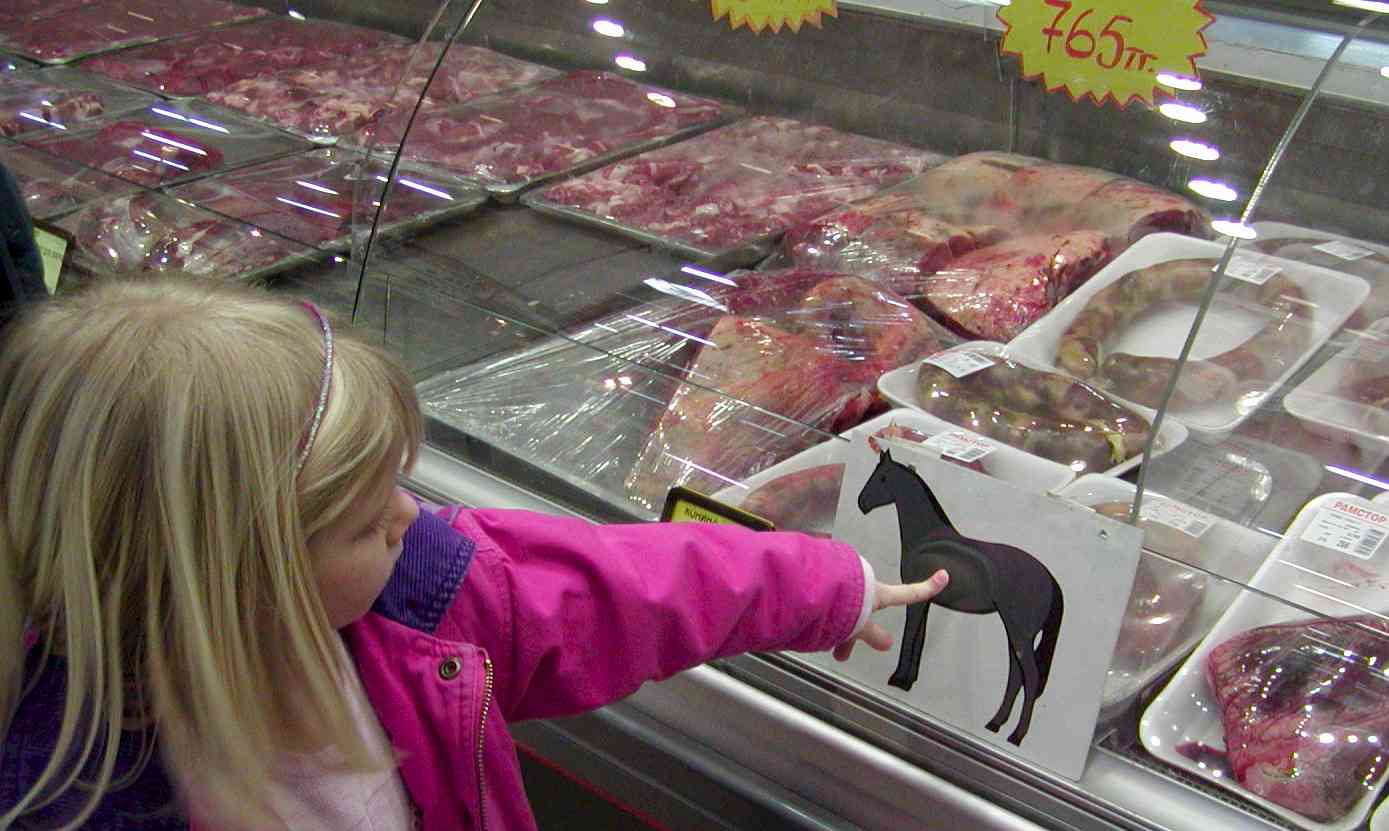Ten years after 100 US kids were sickened in a Salmonella outbreak linked to pet turtles, another 76 have gotten sick (and thousands more in between)
 Growing up in late-1960s suburbia, my parents thought dogs should run on farms like their dogs had, and cats were a nuisance.
Growing up in late-1960s suburbia, my parents thought dogs should run on farms like their dogs had, and cats were a nuisance.
Turtles were inexpensive, popular, and low maintenance, with an array of groovy pre-molded plastic housing designs to choose from. Invariably they would escape, only to be found days later behind the couch along with the skeleton of the class bunny my younger sister brought home from kindergarten one weekend.
But eventually, replacement turtles became harder to come by. Reports started surfacing that people with pet turtles were getting sick. In 1975, the U.S. Food and Drug Administration (FDA) banned commercial distribution of turtles less than 4 inches in length, and it has been estimated that the FDA ban prevents some 100,000 cases of salmonellosis among children each year.
Maybe I got sick from my turtle.
Maybe I picked up my turtle, rolled around on the carpet with it, pet it a bit, and then stuck my finger in my mouth. Maybe in my emotionally vacant adolescence I kissed my turtle. Who can remember?
The U.S. Centers for Disease Control reports today that in June 2017, PulseNet, the national molecular subtyping network for foodborne disease surveillance, identified 17 Salmonella Agbeni clinical isolates with indistinguishable XbaI enzyme pattern (outbreak strain) by pulsed-field gel electrophoresis. The same Salmonella Agbeni XbaI pattern was isolated from a turtle in 2015; in a 2016 investigation involving the same outbreak strain, 63% of patients reported contact with turtles (CDC, unpublished data, 2016). Despite prohibition of sale of small turtles (shell length less <4 inches) in the United States since 1975 (1), illness outbreaks associated with turtle contact continue to occur. Ill persons in previous Salmonella Poona and Salmonella Pomona outbreaks linked to turtles were geographically concentrated in the Southwest region of the United States (2,3). Turtle production is known to be higher in the Southeast region of the country (2). An outbreak investigation by CDC and health departments was initiated to identify the source of the 2017 illness outbreak.
A case was defined as isolation of Salmonella Agbeni with the outbreak strain from an ill patient during April–December 2017. State and local health officials interviewed patients to ascertain turtle exposure information, including details about the species of turtle and purchasing information. Purchase locations reported by patients were contacted for traceback information. Whole genome sequencing (WGS), using high quality single nucleotide polymorphism (hqSNP) analysis, was performed by CDC on clinical isolates from the 2017 outbreak, the 2016 illness cluster, and the turtle isolate from 2015 to characterize genetic relatedness.
Seventy-six cases were identified in 19 states in 2017; two thirds (67%) of patients resided in East Coast states (Connecticut, Delaware, Maryland, Massachusetts, New Jersey, New York, Pennsylvania, Rhode Island, and Virginia).* Patient ages ranged from <1–100 years (median = 21 years). Among 63 (83%) patients with information on hospitalization, 30 (48%) were hospitalized; no deaths were reported. Fifty-nine (78%) patients provided exposure information, including 23 (39%) who reported contact with turtles; among these, 14 (61%) specified small turtles. Among 12 patients who reported how the turtles were obtained, six purchased them from a street or roadside vendor, three purchased them from a retail store, two purchased them at festivals, and one reported receiving them as a gift. The traceback investigation did not identify a common turtle farm that supplied purchase locations. WGS hqSNP analysis indicated that the 2017 and 2016 clinical isolates and the 2015 turtle isolate were closely related, differing by 0–18 SNPs.
This salmonellosis outbreak was linked to contact with small turtles and was associated with a higher frequency of hospitalization (48%) than multistate foodborne pathogen outbreaks (27%) as well as recent Salmonella outbreaks linked to turtles (28%–33%) (2–4). The geographic distribution of patients differed from that of previous outbreaks, suggesting the need to better understand the breeding of turtles and distribution of turtle sales in the United States. WGS hqSNP analysis was used to link historic illnesses and turtle isolates to isolates from 2017 patients, supporting the hypothesis that turtles were the likely source of this outbreak. This outbreak indicates further need to educate consumers and retail store staff members regarding the ban on sale of small turtles and to educate consumers to prevent transmission of Salmonella from pets to humans.
Notes from the Field: An Outbreak of Salmonella Agbeni Infections Linked to Turtle Exposure — United States, 2017
MMWR 67(48);1350
Lia Koski, MPH1,2; Lauren Stevenson, MHS1,3; Jasmine Huffman1; Amy Robbins, MPH4; Julia Latash, MPH5,6; Enoma Omoregie, PhD5; Kelly Kline, MPH7; Megin Nichols, DVM1 (View author affiliations)
References
- Turtles intrastate and interstate requirements, 21 C.F.R. Sect. 1240.62 (2011). https://www.accessdata.fda.gov/scripts/cdrh/cfdocs/cfcfr/cfrsearch.cfm?fr=1240.62
- Gambino-Shirley K, Stevenson L, Concepción-Acevedo J, et al. Flea market finds and global exports: four multistate outbreaks of human Salmonellainfections linked to small turtles, United States—2015. Zoonoses Public Health 2018;65:560–8. CrossRefPubMed
- Basler C, Bottichio L, Higa J, Prado B, Wong M, Bosch S. Multistate outbreak of human SalmonellaPoona infections associated with pet turtle exposure—United States, 2014. MMWR Morb Mortal Wkly Rep 2015;64:804. CrossRef PubMed
- Surveillance for foodborne disease outbreaks, United States, 2016: annual report. Atlanta, Georgia: US Department of Health and Human Services, CDC; 2018. https://www.cdc.gov/fdoss/pdf/2016_FoodBorneOutbreaks_508.pdf





 had kissed a girl in a disco in Miami. Both the French Tennis Federation and WADA considered that even though this was an unlikely cause for a positive, it was the most probable reason.
had kissed a girl in a disco in Miami. Both the French Tennis Federation and WADA considered that even though this was an unlikely cause for a positive, it was the most probable reason..jpeg) Cycling is a mess.
Cycling is a mess. “Your non-apology for your role is (sic) amplifying the ‘far-fetched, but sorta fun’ story makes me wonder how serious you are about your posts and your role in our public health community.”
“Your non-apology for your role is (sic) amplifying the ‘far-fetched, but sorta fun’ story makes me wonder how serious you are about your posts and your role in our public health community.” identified 135 cases in 25 states and the District of Columbia; 45% were in children aged ≤5 years. Among 70 patients with primary infection, 37% reported turtle exposure, of which 81% was to small turtles most commonly purchased from street vendors. A matched case-control study showed a significant association between illness and exposure to turtles (matched odds ratio [mOR] = 16.5). Increasing enforcement of existing local, state, and federal regulations against the sale of small turtles, increasing penalties for illegal sales, and enacting more state and local laws regulating the sale of small turtles (e.g., requiring Salmonella awareness education at the point-of-sale), could augment federal prevention efforts. …
identified 135 cases in 25 states and the District of Columbia; 45% were in children aged ≤5 years. Among 70 patients with primary infection, 37% reported turtle exposure, of which 81% was to small turtles most commonly purchased from street vendors. A matched case-control study showed a significant association between illness and exposure to turtles (matched odds ratio [mOR] = 16.5). Increasing enforcement of existing local, state, and federal regulations against the sale of small turtles, increasing penalties for illegal sales, and enacting more state and local laws regulating the sale of small turtles (e.g., requiring Salmonella awareness education at the point-of-sale), could augment federal prevention efforts. ….jpg) During April–July 2009, the Utah Department of Health identified five cases of Salmonella Typhimurium infection with indistinguishable pulsed-field gel electrophoresis (PFGE) patterns, predominantly among children. In August,
During April–July 2009, the Utah Department of Health identified five cases of Salmonella Typhimurium infection with indistinguishable pulsed-field gel electrophoresis (PFGE) patterns, predominantly among children. In August, .jpg) But the basic facts in that Oregonian story — 50 sickened, including many young girls, by salmonella traced to frogs — were just too good not to spin into a Internet sensation based on a quote by William Keene.
But the basic facts in that Oregonian story — 50 sickened, including many young girls, by salmonella traced to frogs — were just too good not to spin into a Internet sensation based on a quote by William Keene. Doctors blamed the cases in 25 US states on youngsters kissing frogs after seeing the film. Most were under 10, with half being girls.
Doctors blamed the cases in 25 US states on youngsters kissing frogs after seeing the film. Most were under 10, with half being girls. Turtles were inexpensive, popular, and low maintenance, with an array of groovy pre-molded plastic housing designs to choose from. Invariably they would escape, only to be found days later behind the couch along with the skeleton of the class bunny my younger sister brought home from kindergarten one weekend.
Turtles were inexpensive, popular, and low maintenance, with an array of groovy pre-molded plastic housing designs to choose from. Invariably they would escape, only to be found days later behind the couch along with the skeleton of the class bunny my younger sister brought home from kindergarten one weekend. .jpg) A report that will be published tomorrow
A report that will be published tomorrow.jpg) Veterinarian Mark Mitchell, a University of Illinois zoological medicine professor, has been working with Louisiana turtle farmers in research aimed at raising salmonella-free turtles, says the industry has been unfairly saddled with harsher restrictions than producers of human foods also blamed for recent salmonella outbreaks.
Veterinarian Mark Mitchell, a University of Illinois zoological medicine professor, has been working with Louisiana turtle farmers in research aimed at raising salmonella-free turtles, says the industry has been unfairly saddled with harsher restrictions than producers of human foods also blamed for recent salmonella outbreaks. The national government isn’t calling for a ban. But the Health Ministry, on its swine flu phone hotline, recommends that people avoid "close contact — including shaking hands and giving the bise."
The national government isn’t calling for a ban. But the Health Ministry, on its swine flu phone hotline, recommends that people avoid "close contact — including shaking hands and giving the bise."